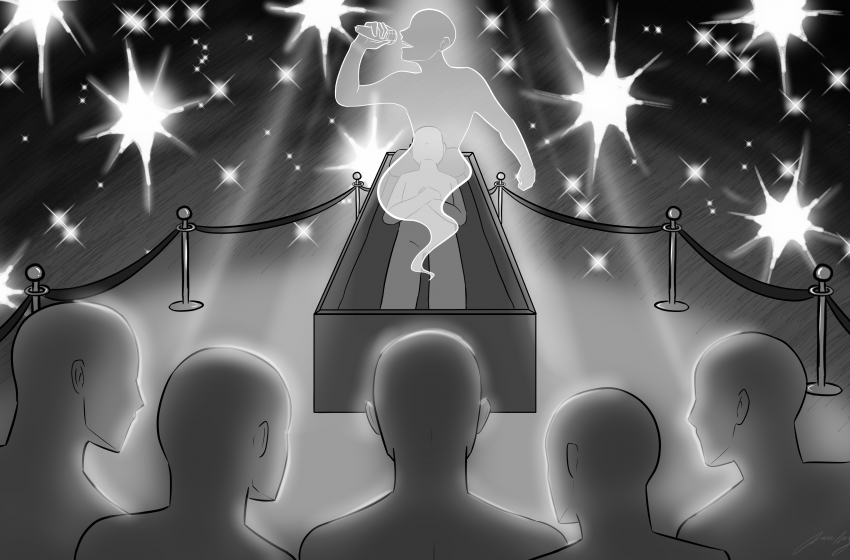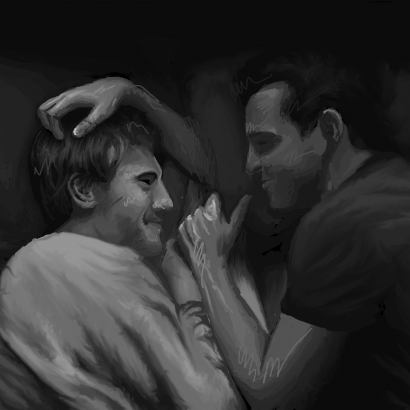Story and Illustration by Isabelle Wong
Staff Illustrator
Deceased celebrities might find their final resting places somewhere other than flower-filled memorials or graves with Pentagon-level security. Musicians who suffered tragically early deaths, such as Whitney Houston or Elvis Presley, live on holographically through A.I. generated concerts, and shows like Glee and Riverdale honor late actors Cory Monteith and Luke Perry, respectively, by embedding final farewells into their scripts.
The ways in which companies, families, or fans pay their respects to these celebrities take many different forms. A celebrity’s family may create an organization under their name, designed to carry on their name and legacy posthumously. In other instances, these methods of career continuity are taken up by public relations (PR) teams who might be tasked with managing merchandise sales or official websites, giving a more professional nature to these eulogies. These homages may be well-intended, but they bring into question whether or not intention takes precedence over the potential disapproval from the celebrity whose career is proliferated — a question of marketing over morality.
Frida Kahlo is an example of a figure whose image is used for capitalistic means, disregarding the principles she established during her lifetime. Today’s society continues to appreciate Kahlo’s work and beliefs more than half a century after her death. However, the artist’s face is found not only in her portraits, but also adorning T-shirts produced by fast fashion companies. Taking into account that one of Kahlo’s core beliefs during her lifetime was anti-capitalism, the existence of her modern-day legacy in products that earn profit for large corporations which Kahlo would likely oppose directly disregards her character.
The actions taken by singer Michael Jackson’s family in the years after his death represent a more genuine form of sustaining a celebrity’s legacy. Members of the Jackson estate aim to carry on his legacy by sharing his music with audiences discovering him postmortem. For instance, following his death, sister and fellow artist Janet Jackson performed a tribute to him with her performance of Scream at the 2009 MTV Video Music Awards. Looking towards more commercial forms in which Jackson’s artistic career continues to exist show similar sincerity to the approach of his family. While shows such as Cirque du Soleil’s Michael Jackson ONE may be paid experiences, their purposes lie in giving audiences the chance to see the art of his performance style years after his passing.
Analyzing the different circumstances in which modern industries use these celebrities’ identities presents a spectrum for honoring them, with disregard and commemoration lying at opposite ends.
Disrespect is subjective, as is respect. This subjectivity of each roots itself in the desire to preserve the reputations these celebrities obtained during their lifetimes, approached by different people in many different ways. However, those who wish to follow such desires must recognize that life after death is not something every celebrity may want. Such recognition ensures that the image of the deceased is not used as a PR puppet, and defines the line between appreciating a legacy and abusing it.



